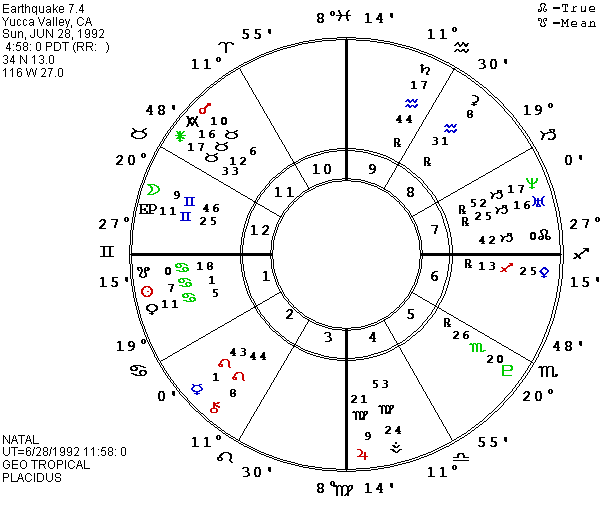Two California Quakes
Zip Dobyns
This issue of The Mutable Dilemma was in its final stages of preparation when we got a couple of fairly big ones. The 7.4 shaker came at 4:58 A.M. with an epicenter about 6 miles north of Yucca Valley, CA. About three hours later, a 6.5 follow-up hit Big Bear, CA at 8:04 A.M. Both quakes had unusually long durations—around a minute for the first—but were far enough from the main population centers to do minimal damage compared with a big quake in the middle of L.A. Estimated damage is currently in the range of $50 million and rising. All we felt here in central L.A. was a rolling motion. In our house, one envelope slipped off a stack. Mark’s many piles of books and magazines, one about 4 feet high, remained unmoved. But the second quake did take out our power for about five hours so it delayed the final editing of The Mutable Dilemma.
There have been over 1,000 small aftershocks in the 24 hours after the two big shocks. The action is occurring on different faults, the northwest-trending Johnson Valley Fault and an unnamed northeast-trending fault believed responsible for the Big Bear quake. But a Caltech seismologist on Monday morning said that the faults were within 15 miles of each other at one point so the quakes were probably related. Three of the Monday morning aftershocks were big enough to have normally been ranked as important quakes if they had not followed bigger ones. They included a 4.9 magnitude at 7:09 A.M. and a 5.4 magnitude at 7:14 A.M. in the Yucca Valley–Landers area, and a 4.4 magnitude at 7:41 A.M. in the Big Bear area. I felt the last, but it was barely detectible in our home near central L.A.
California’s biggest fault, the San Andreas, remains intact, though the Big Bear quake was only ten miles from it. So the really BIG ONE that everyone is waiting for is still ahead. The 7.4 one was big enough for most people, being felt as far as San Diego and San Luis Obispo in California and as far as Denver, Albuquerque, and Boise, ID to the east. It opened up a surface rupture near Landers that is 44 miles long and showed a horizontal offset of nearly 18 feet. Considering its magnitude, the damage was really minimal. One three-year-old boy was killed by a falling chimney in Joshua Tree and a few hundred people reported injuries, mostly minor like cuts from broken glass or bruises from falling objects. A handful of homes or mobile homes burned when set on fire by damaged gas lines and a somewhat larger number received serious structural damage.

The chart of the first quake follows. Note Jupiter on the IC sextile the midpoint of Sun/Venus in the first house. The quake tested a lot of people’s faith, and some are already headed out for other parts of the country. The asteroid Richter, the name of the man who originated the commonly used scale that measures ground movement, was at 1 Taurus 34 for the first quake. The Ascendant/MC midpoint had just crossed it. For those who want to check it too, the Big Bear quake had 27 Aries 59 on the MC and 6 Leo 48 rising. Its Ascendant/MC midpoint was octile Richter. Gaea (the earth) holds an opposition to Pluto for several days. They were on the cusps of the sixth-twelfth houses for the first big quake which caused the only death and most of the injuries. Asteroid California squared the East Point for the first quake and was octile the MC for the second one while the Moon had moved into an exact square to California by then. The 7.4 also had Pasacentennium (named for Pasadena) on the MC as the media made a mad dash to Cal Tech, the earthquake experts in Pasadena. The asteroid aspects are highly meaningful yet, except for Gaea to Pluto, unusable for prediction since aspects to angles occur several times a day and last less than ten minutes. We need more research on earthquakes and astrology—maybe this summer? I’m Uranian enough to enjoy thunder and lightning storms and to find earthquakes fascinating rather than scary.